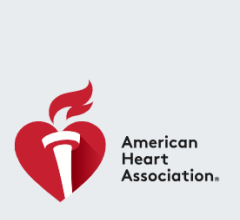
November 23, 2021 — A novel device called venous external support (VEST) may lead to increased longevity and durability of saphenous (leg) vein grafting during coronary artery bypass surgery, according to a new trial done in collaboration with Mount Sinai Health System and conducted by the National Heart, Lung and Blood Institute Cardiothoracic Surgical Trials Network.
The initial phase of the research, which is the first U.S. Food and Drug Administration (FDA)-approved trial to test the efficacy of this support device, will prompt further long-term studies that may lead to FDA approval. The results were announced November 13 as a late-breaking clinical trial during the American Heart Association (AHA) 2021 Scientific Sessions.
“Vein grafts have a limited durability—about half of them will be closed 10 years after coronary bypass surgery. We need to find a solution to improve outcomes of surgery and prevent patients from having complications and repeated procedures,” says Principal Investigator John Puskas, M.D., chair of cardiovascular surgery at Mount Sinai Morningside.
Coronary artery bypass surgery (CABG) is the most commonly performed cardiac operation, and improves survival in patients with complex left main and/or multi-vessel coronary artery disease. Surgeons commonly graft healthy saphenous veins onto arteries that feed the heart to bypass clogged vessels and restore blood flow. However, saphenous veins normally experience low pressure in the leg; the higher-pressure environment of the coronary arteries can cause intimal hyperplasia — thickening of their walls—which promotes atherosclerosis and may lead to eventual closure of the vein graft.
 VEST is a small device made of fine cobalt-chromium wire mesh that is placed over a pencil-size vein graft. The device is made by Vascular Graft Solutions (VGS). The external support is designed to prevent veins from stretching under higher pressure, thereby leading to better survival of vein grafts and improved patient outcomes.
VEST is a small device made of fine cobalt-chromium wire mesh that is placed over a pencil-size vein graft. The device is made by Vascular Graft Solutions (VGS). The external support is designed to prevent veins from stretching under higher pressure, thereby leading to better survival of vein grafts and improved patient outcomes.
To study VEST’s efficacy, researchers conducted a randomized patient trial in 17 cardiovascular surgery centers in Canada and the United States between January 2018 and February 2019. They enrolled 224 patients scheduled to undergo CABG with two or more saphenous vein grafts. Patients were their own controls: for each patient, one vein graft was supported with VEST and the other vein graft or grafts had no external support. Investigators used the thickness of the inner cell layer lining the vein graft as the measurement to determine the success of the trial (primary endpoint). To assess this, researchers placed a catheter inside the vein graft and conducted an intravascular ultrasound 12 months after surgery.
In all, 203 of the 224 patients returned for the one-year follow-up angiogram and intravascular ultrasound. However, 90 of them did not have not have intravascular ultrasound completed for both vein grafts, due to narrowed grafts or other technical reasons including catheter issues; for these patients, researchers replaced missing information with substituted values from estimates based on data already collected from other patients in the trial.
Data from these 203 patients showed that VEST did not significantly reduce intimal hyperplasia in vein grafts after coronary bypass surgery, compared to non-VESTed vein grafts. But when researchers did the same type of analysis on the subset of 113 patients who did complete ultrasounds on both VESTed and non-VESTed grafts, the VESTed grafts had statistically significantly lower amounts of hyperplasia compared to non-VESTed grafts.
“These findings are encouraging despite the fact that the p-value of the primary analysis did not quite reach statistical significance. It may be important to note that among patients with complete intravascular ultrasound data the VEST was associated with statistically reduced intimal hyperplasia,” Puskas said.
The investigators plan to continue follow-up of these patients for five years after surgery.
Find More AHA 2021 Late-breaking News


 November 14, 2025
November 14, 2025 









